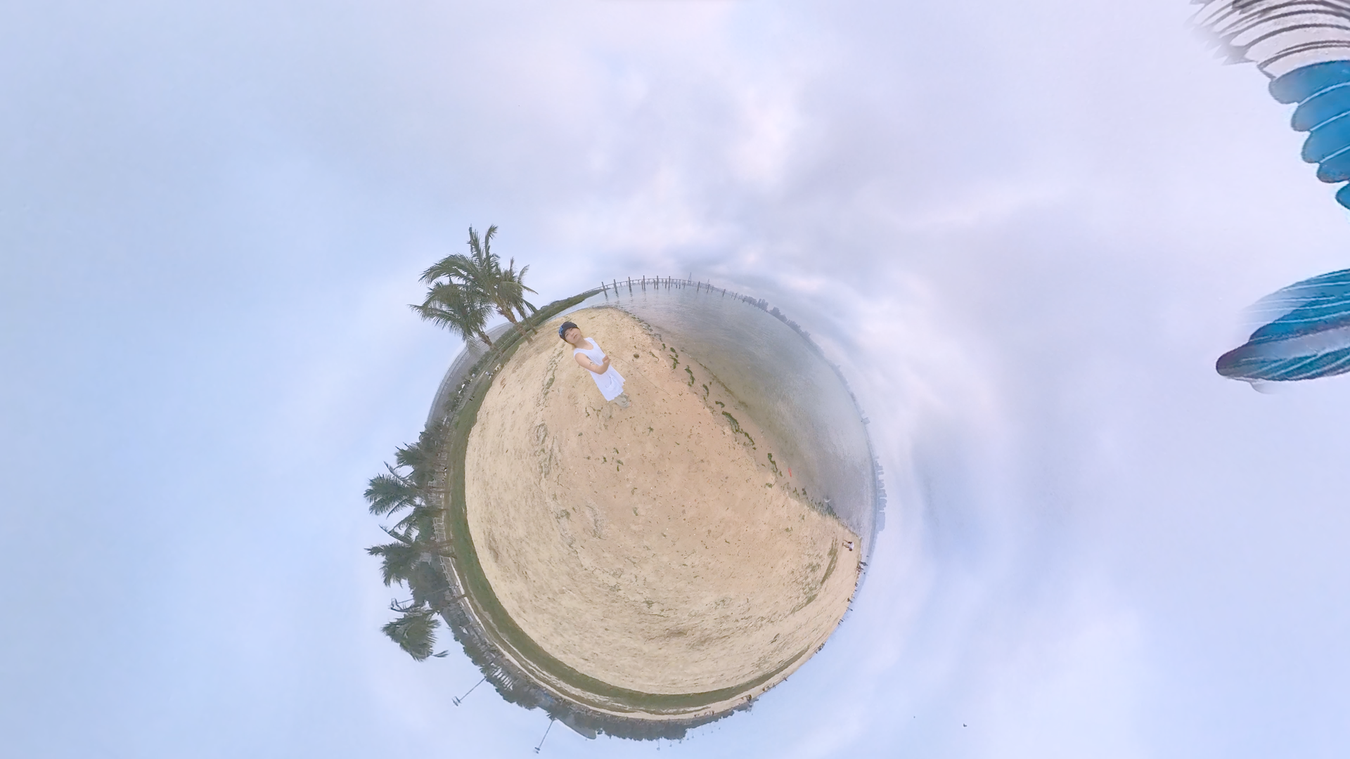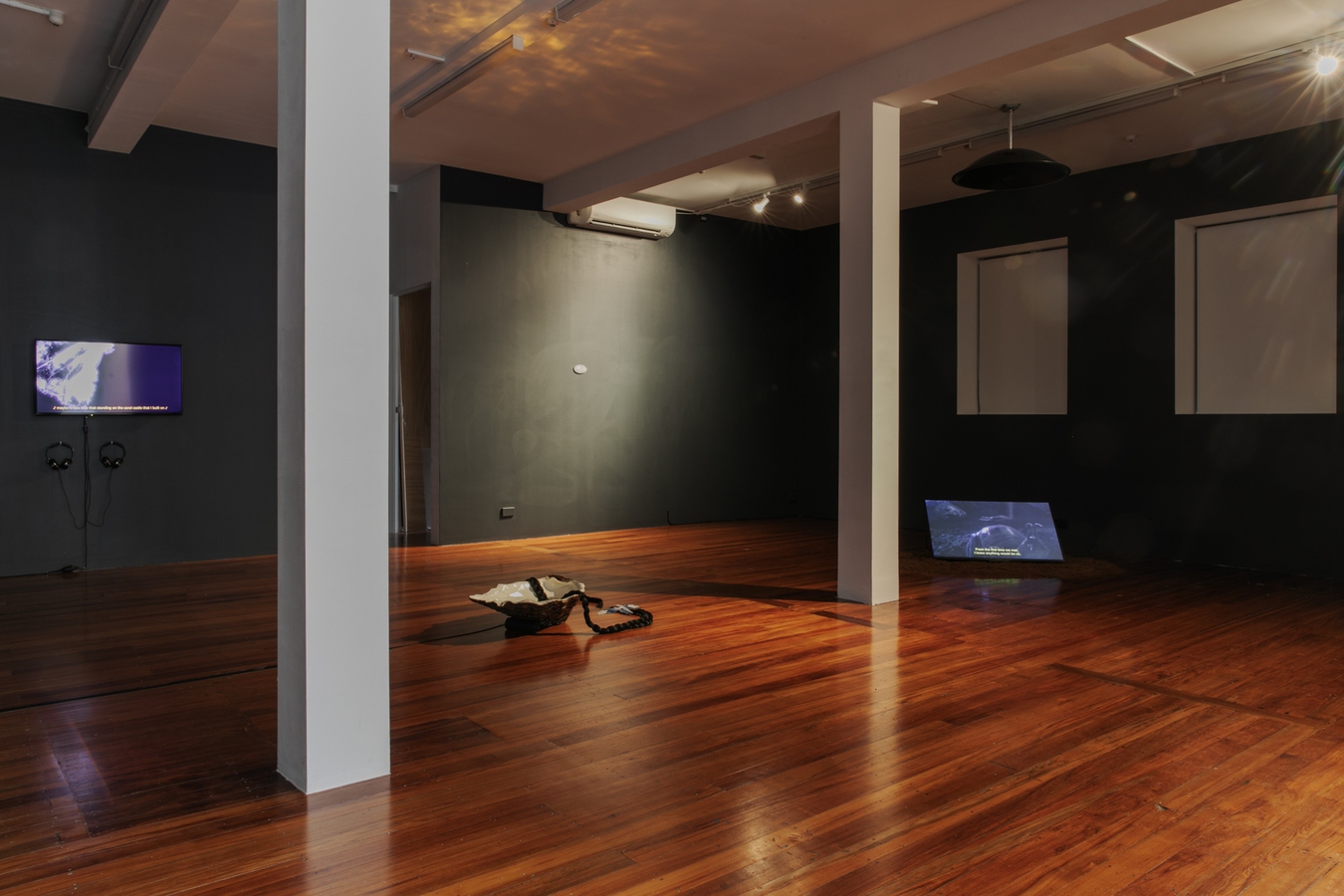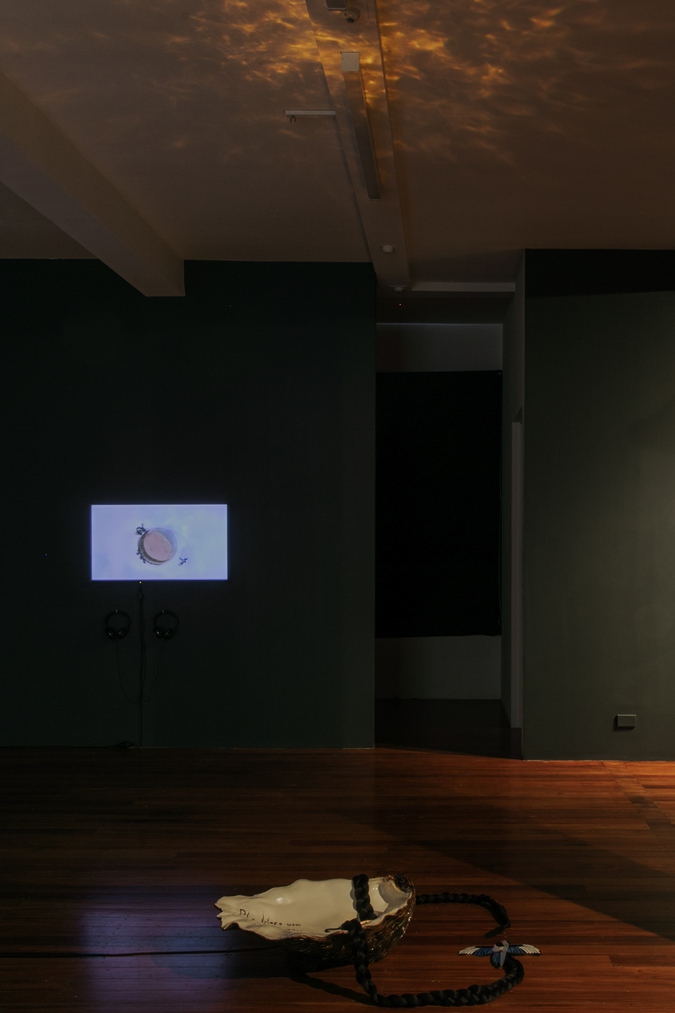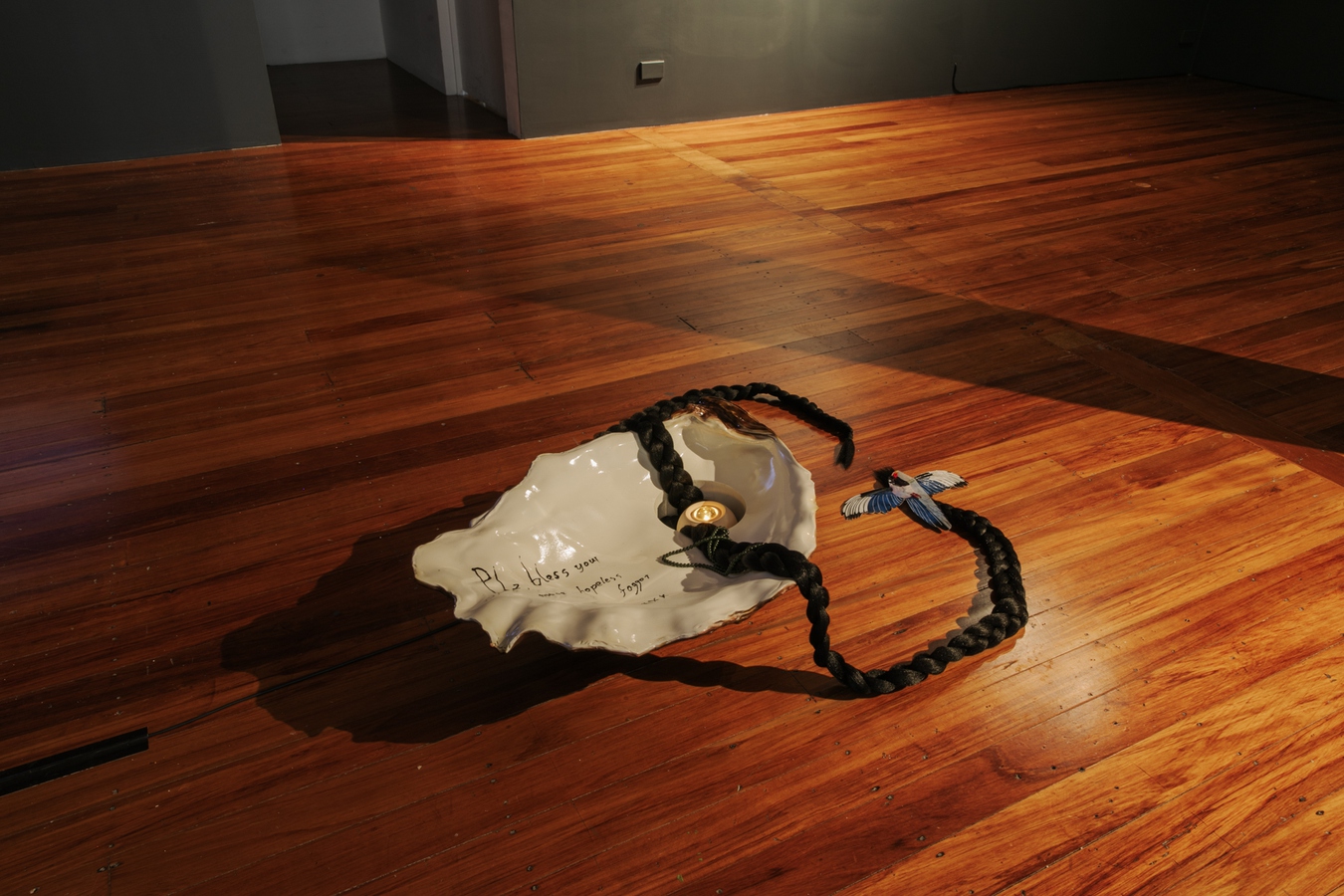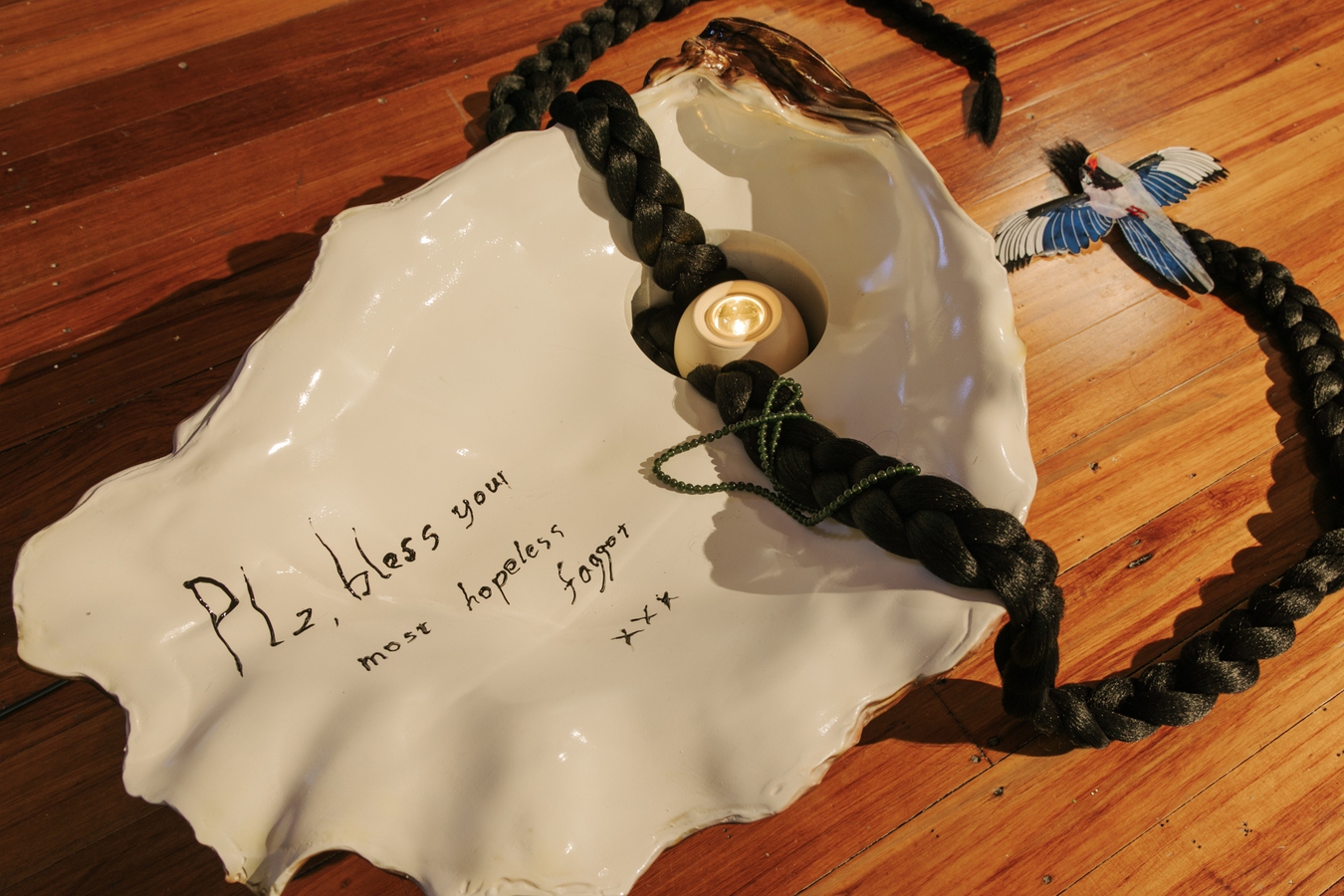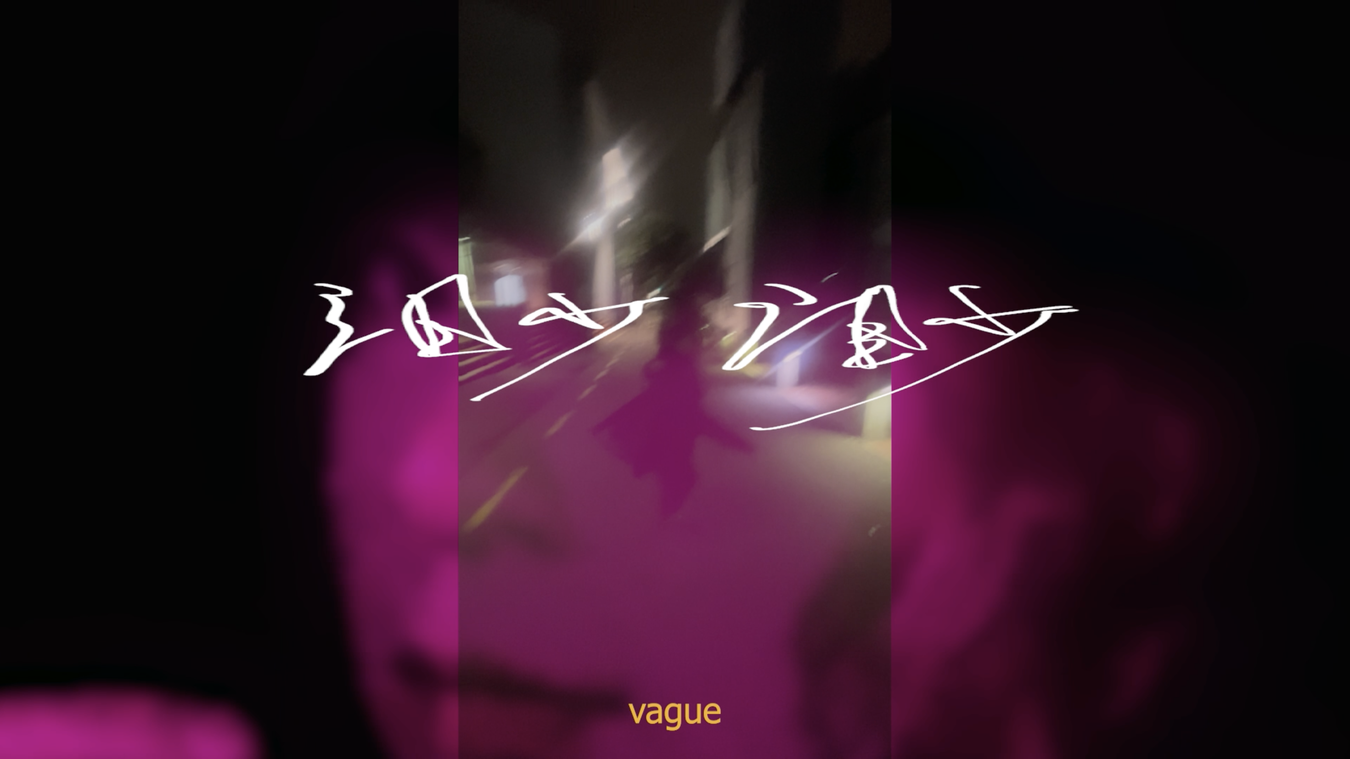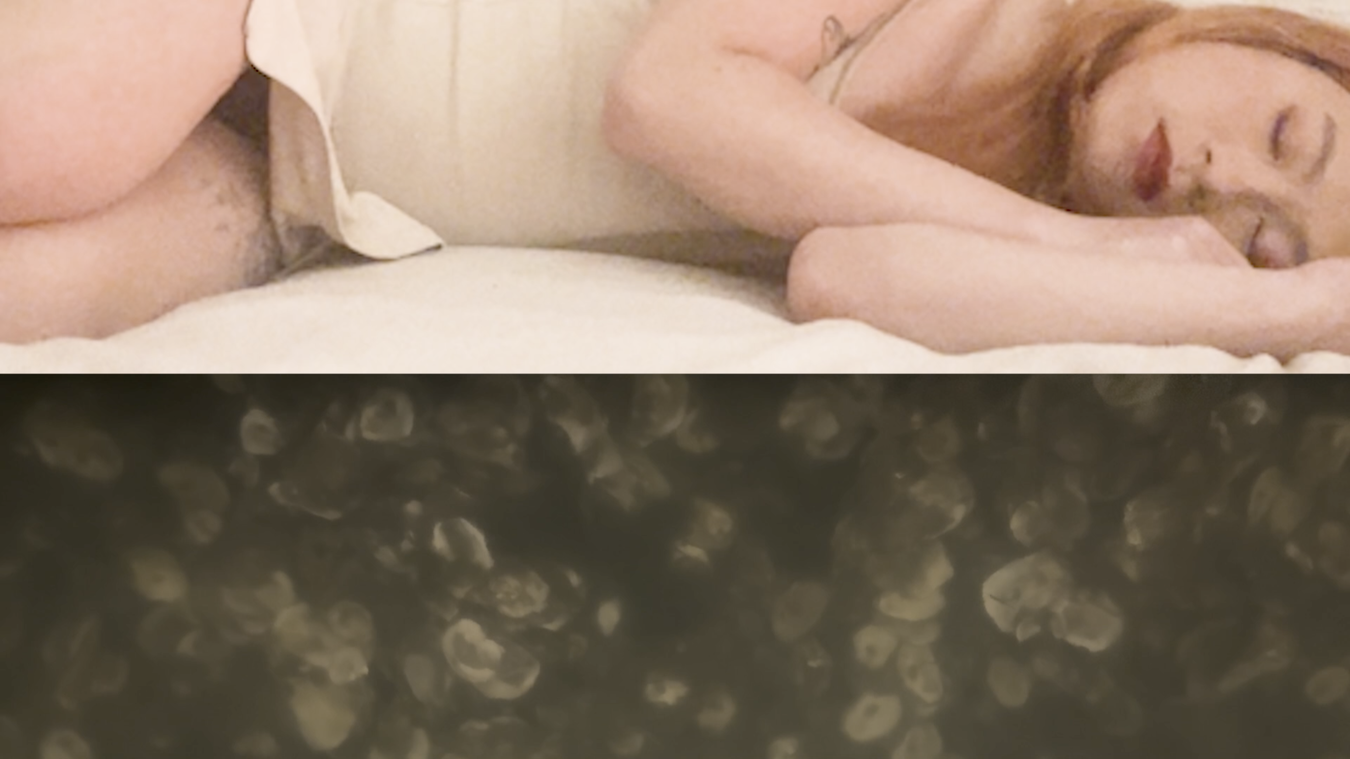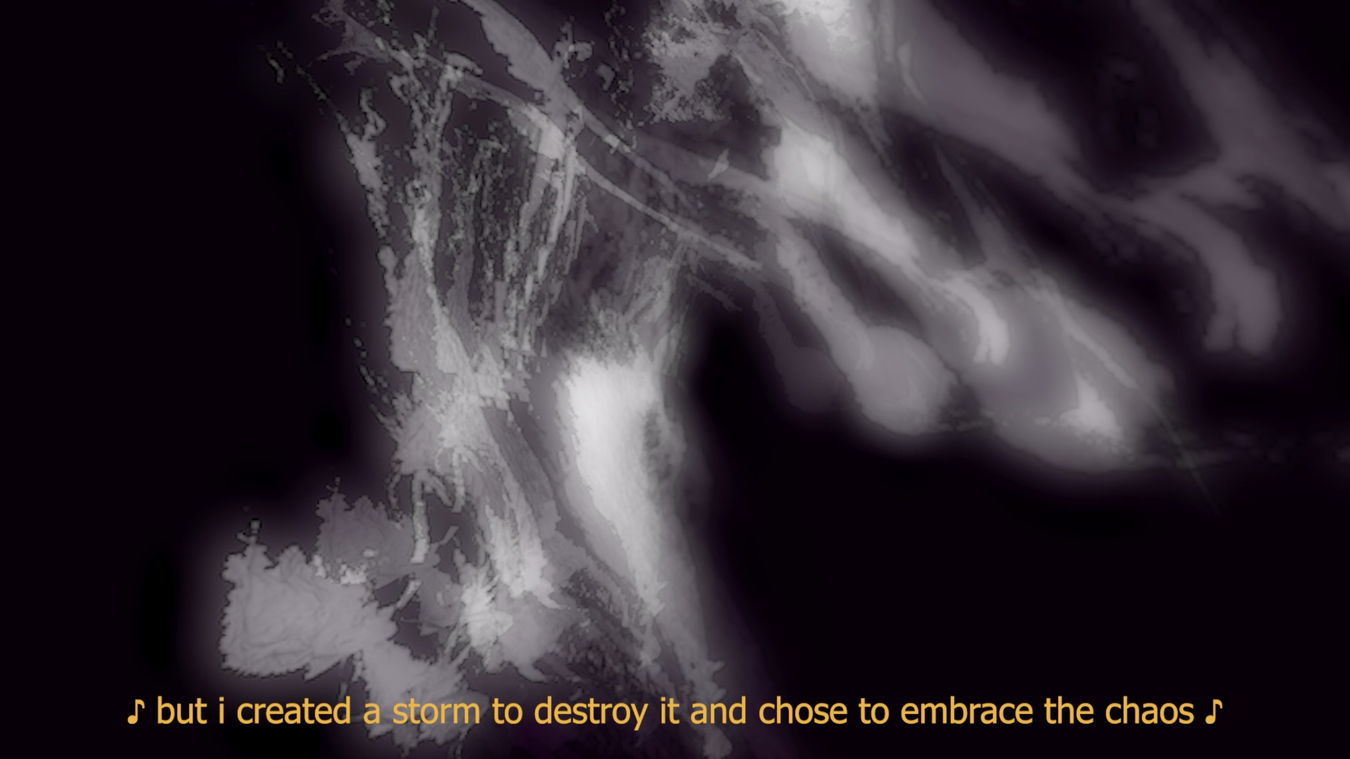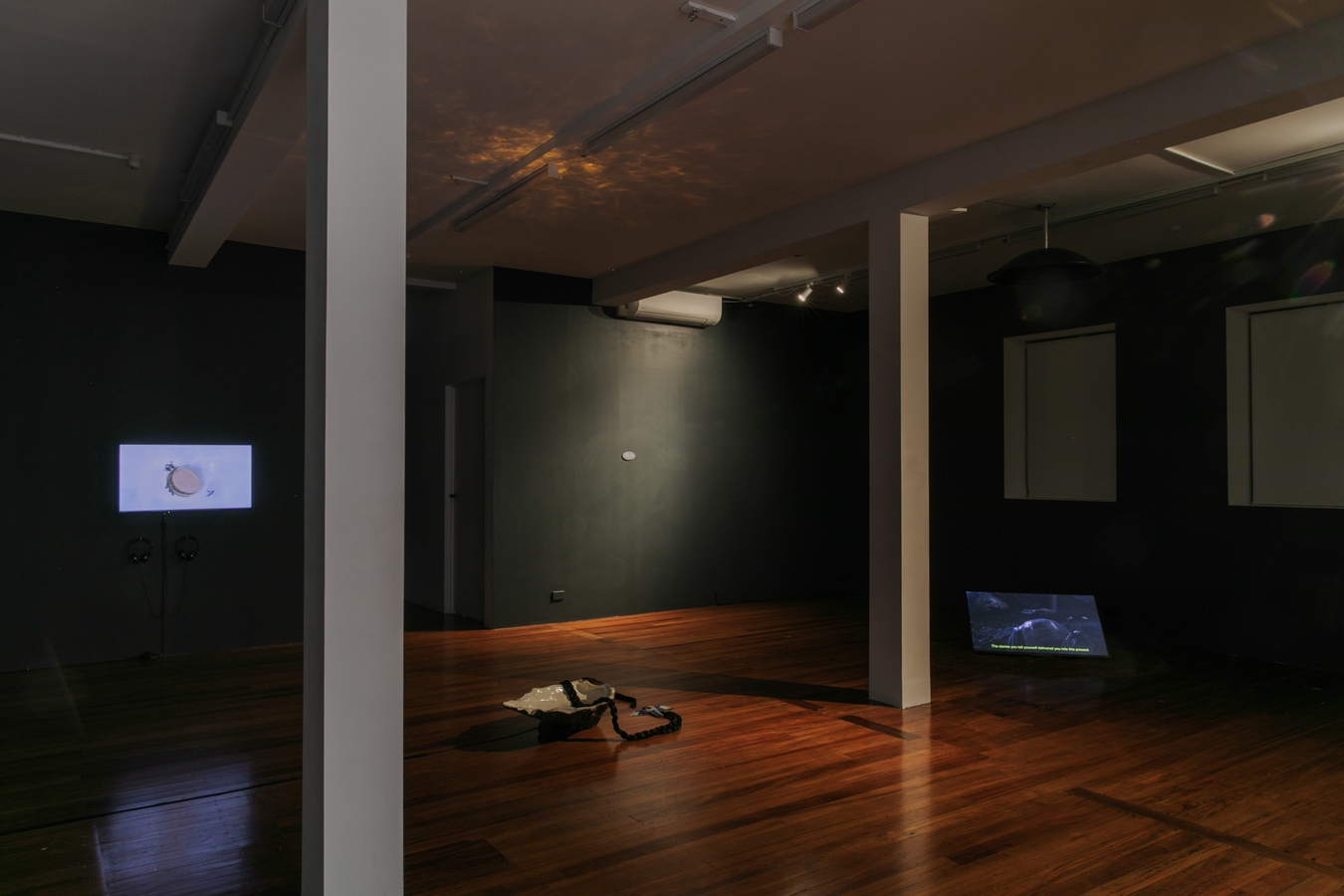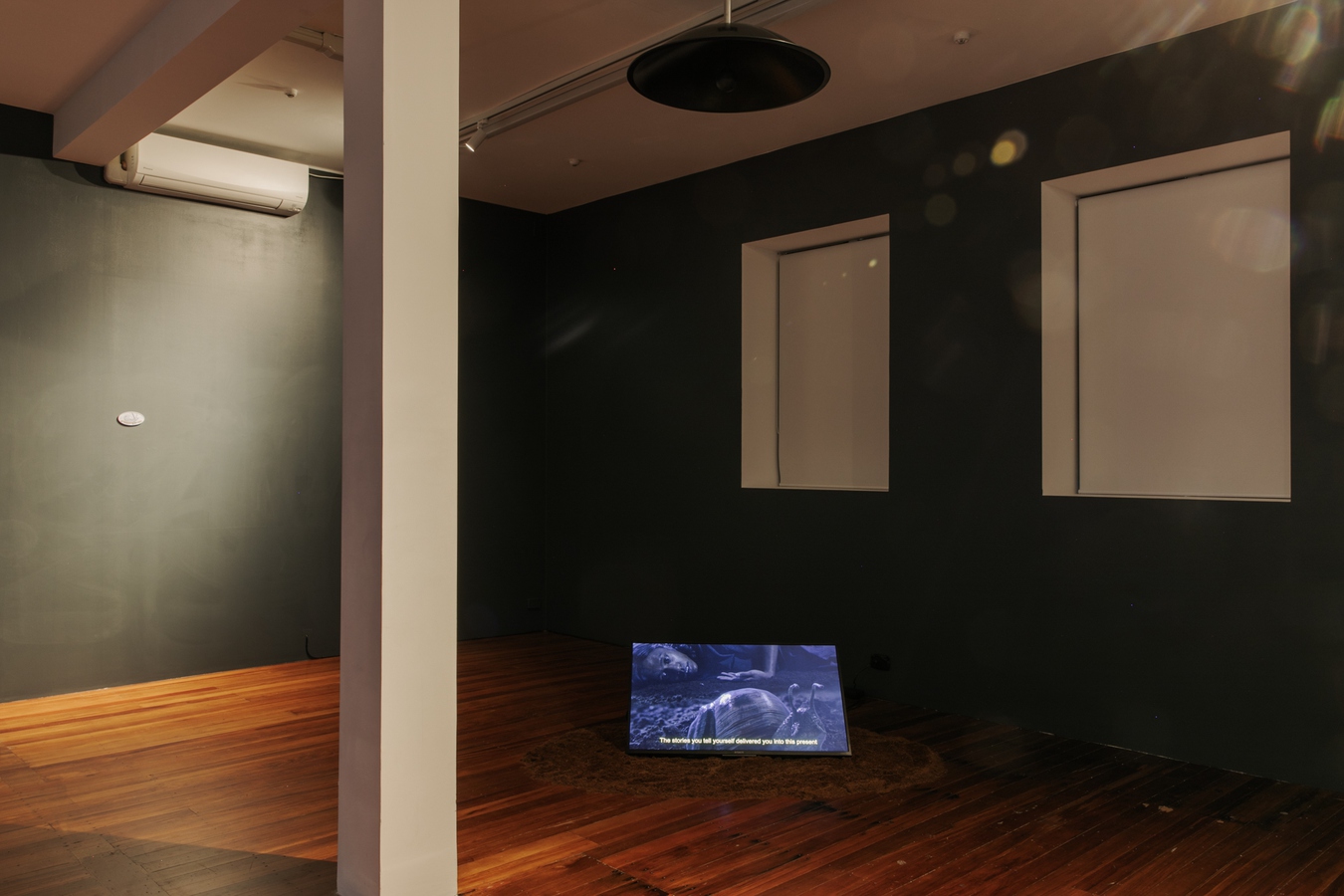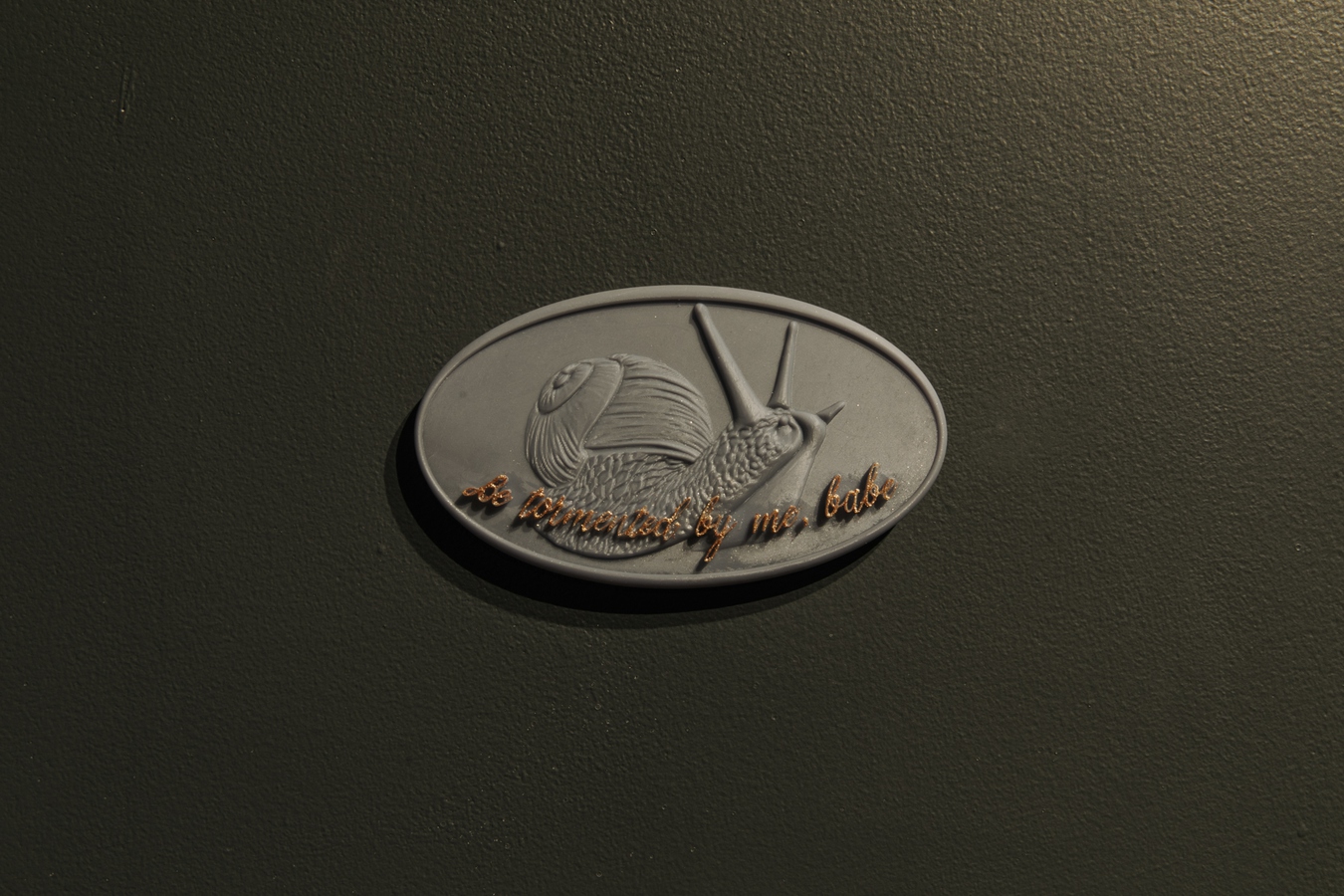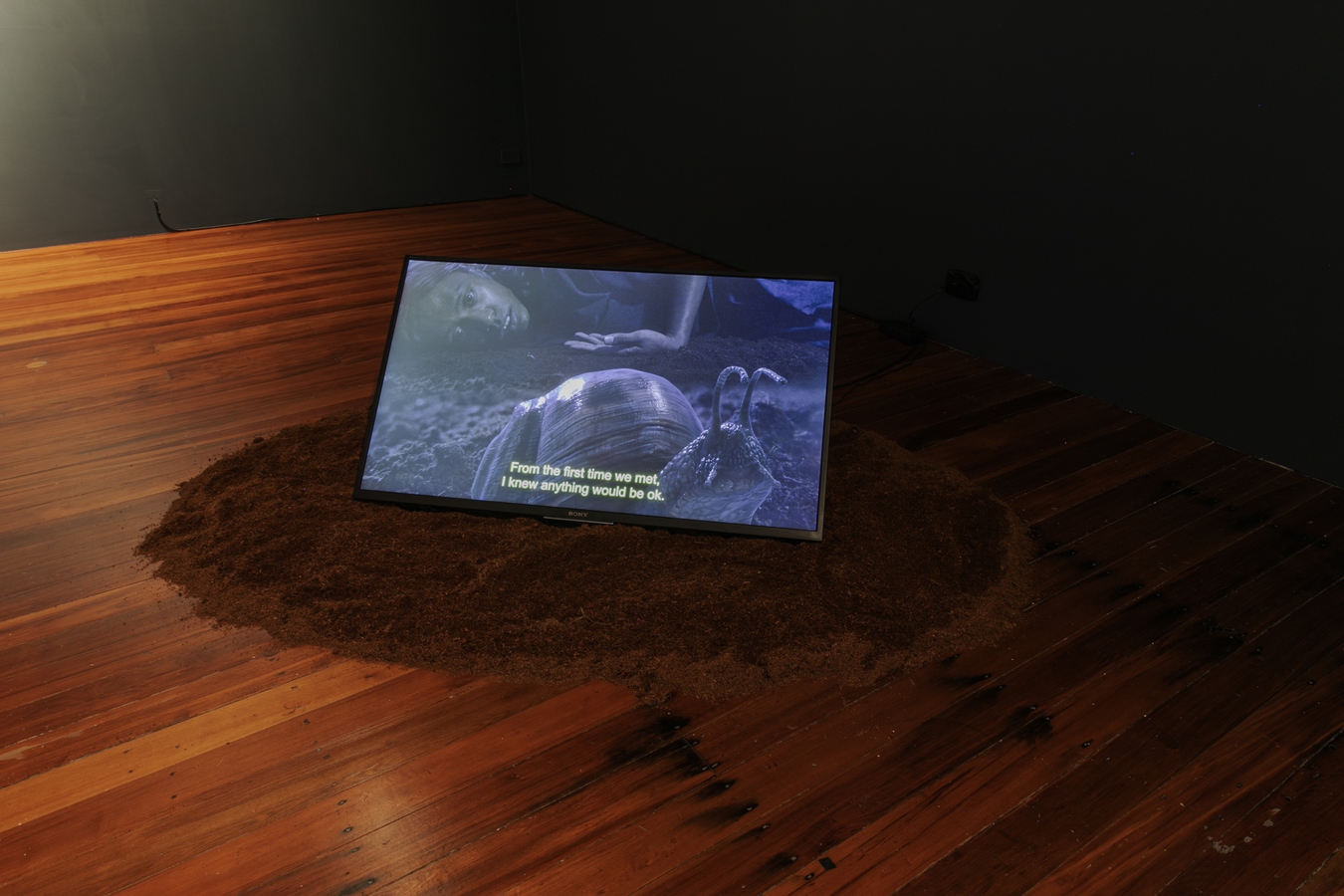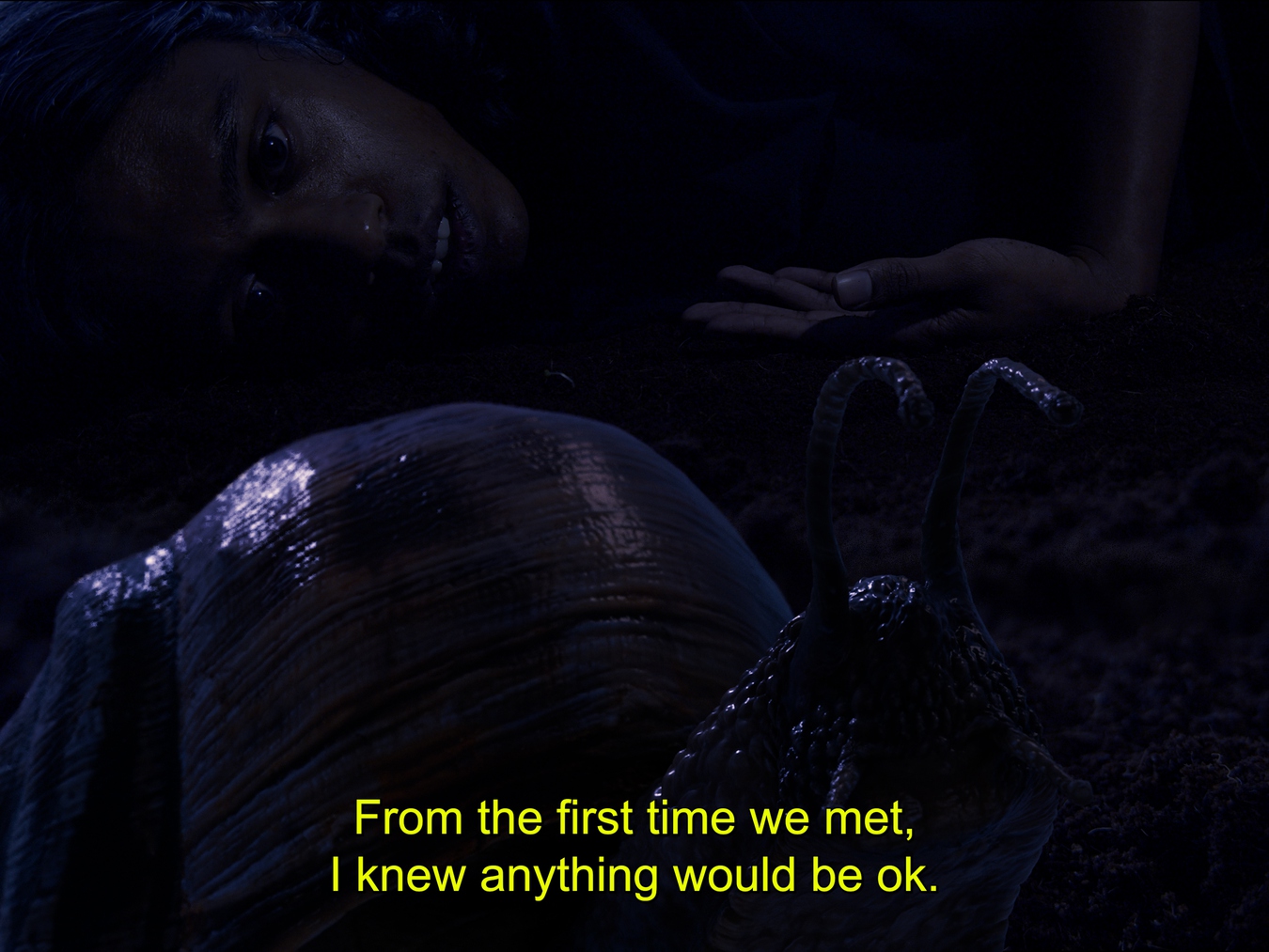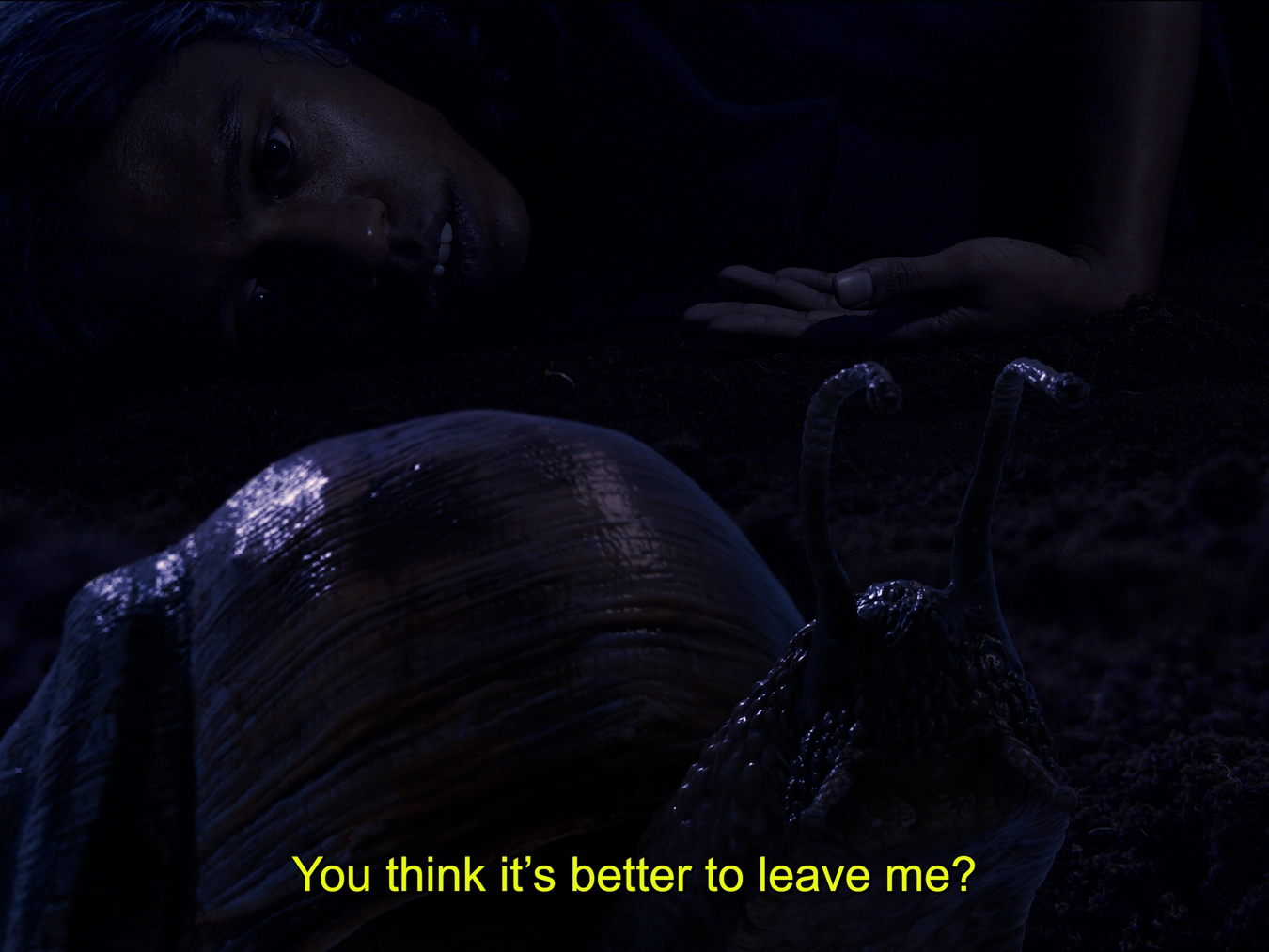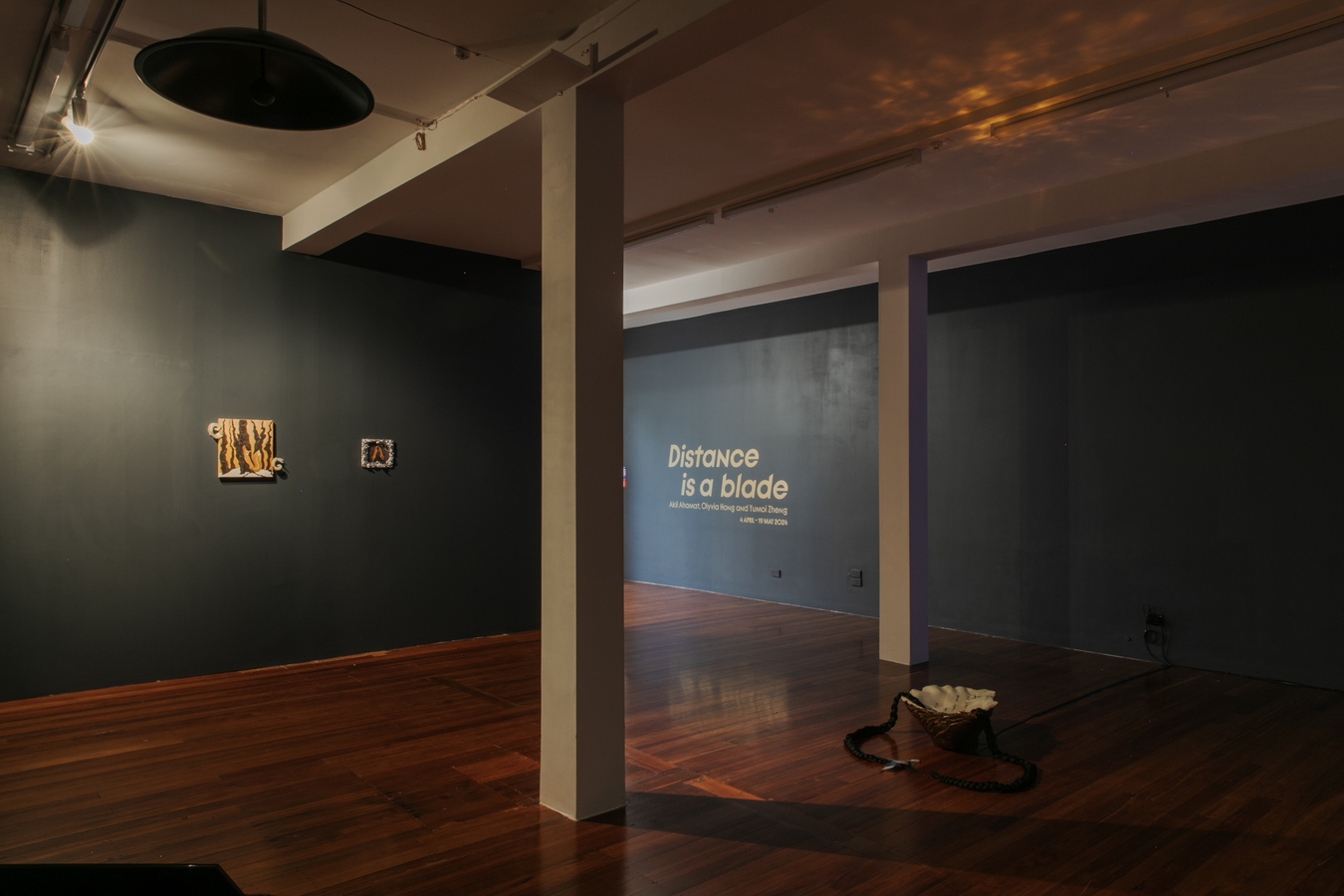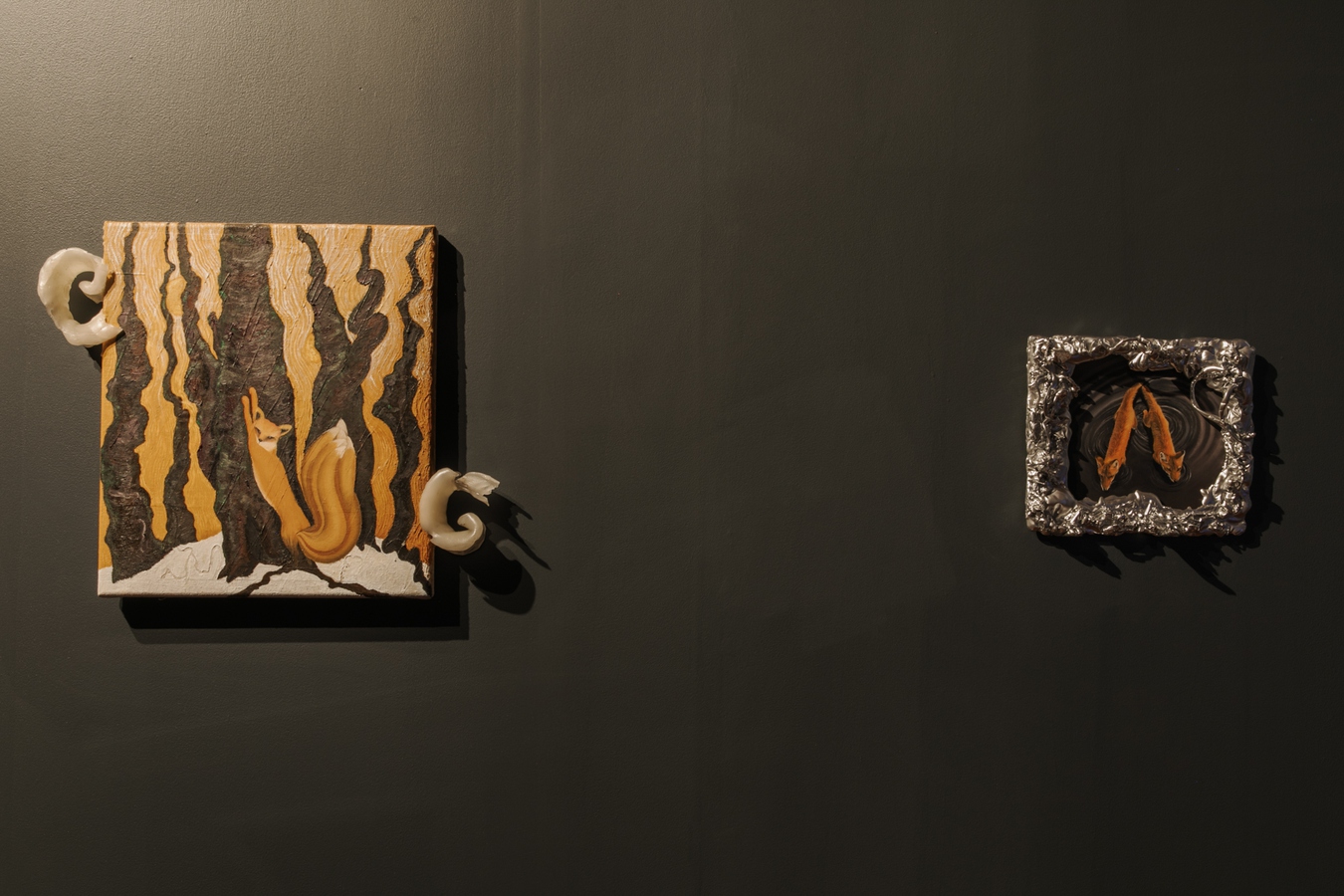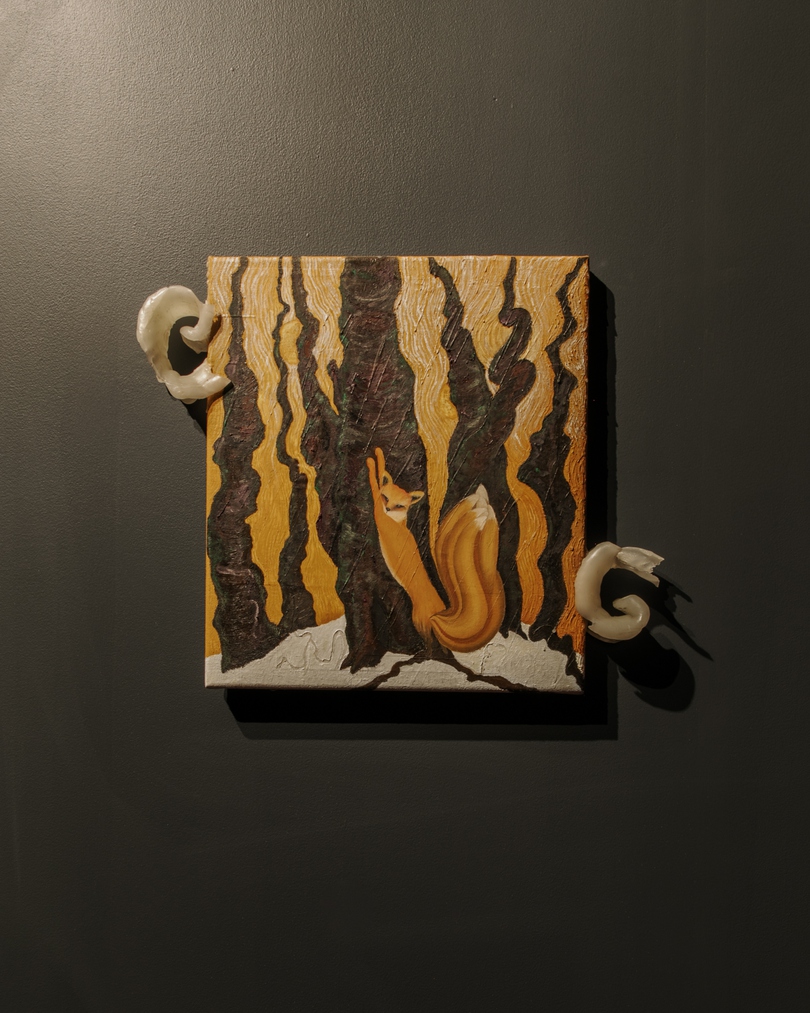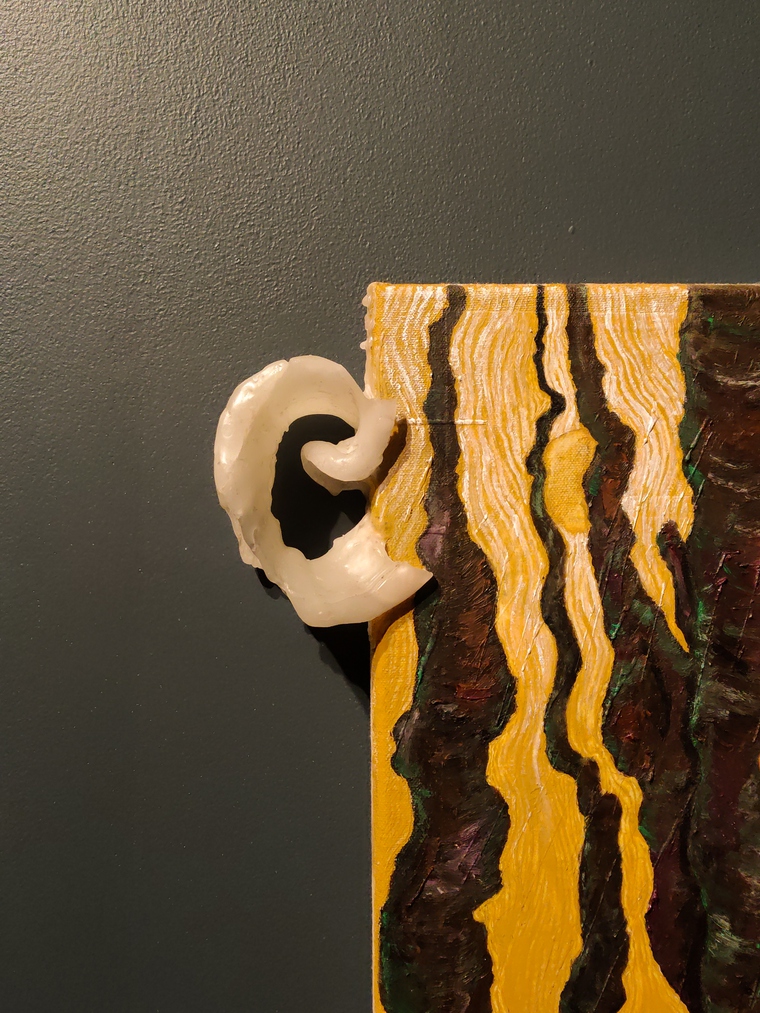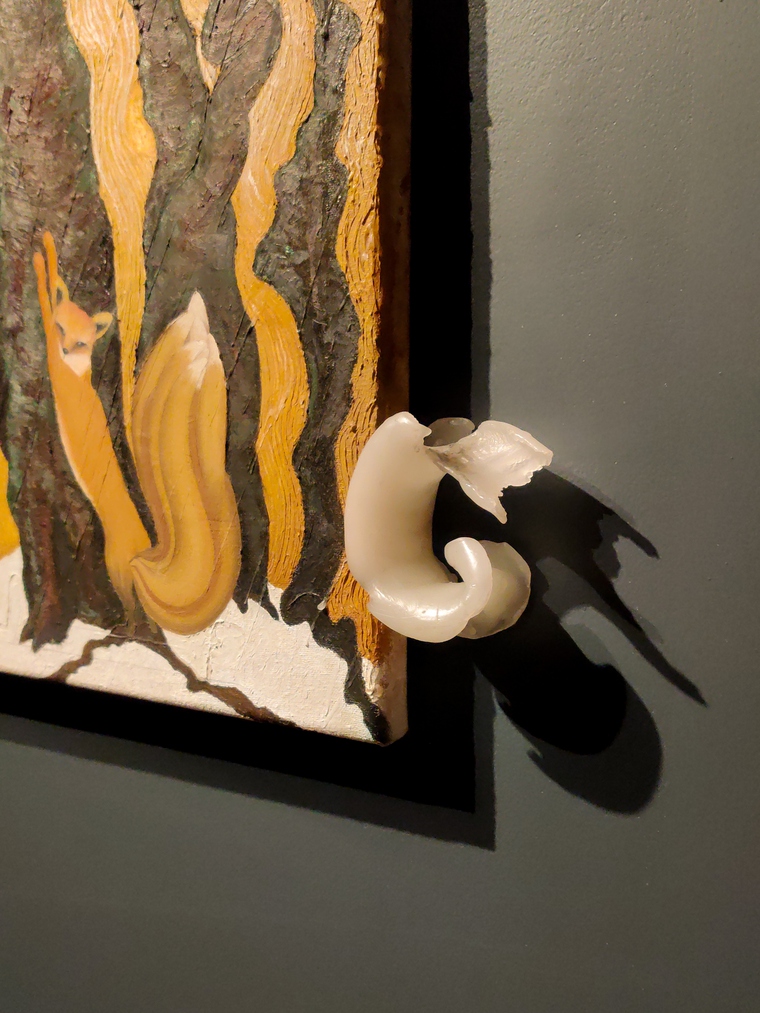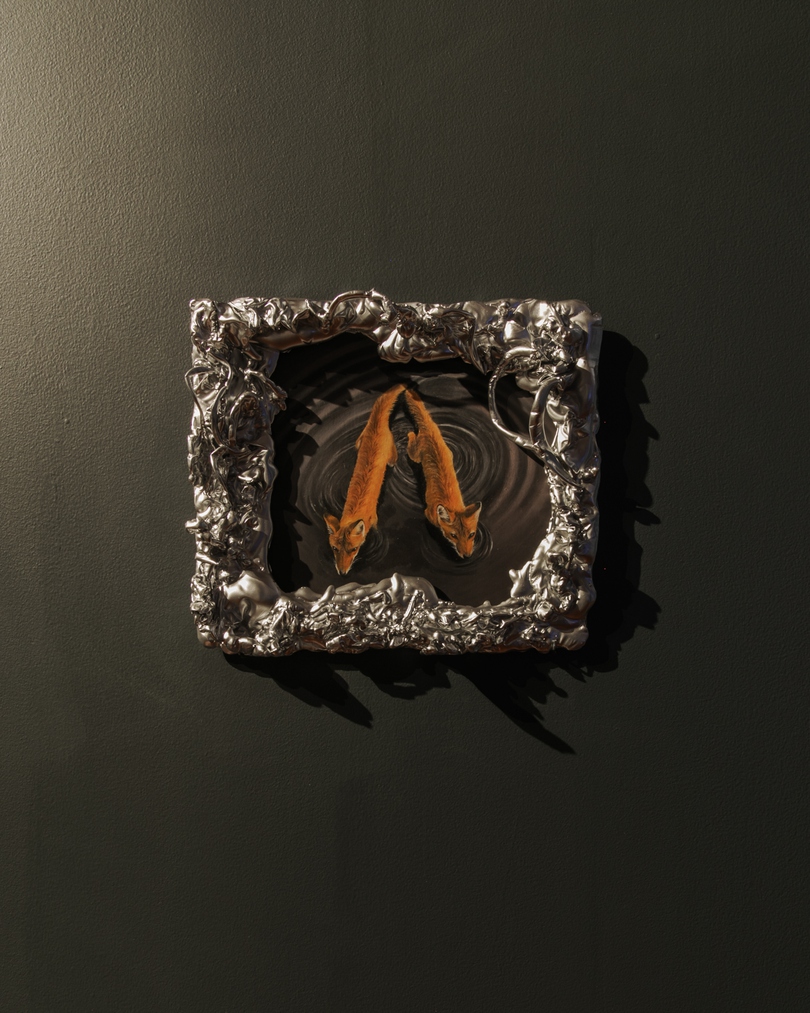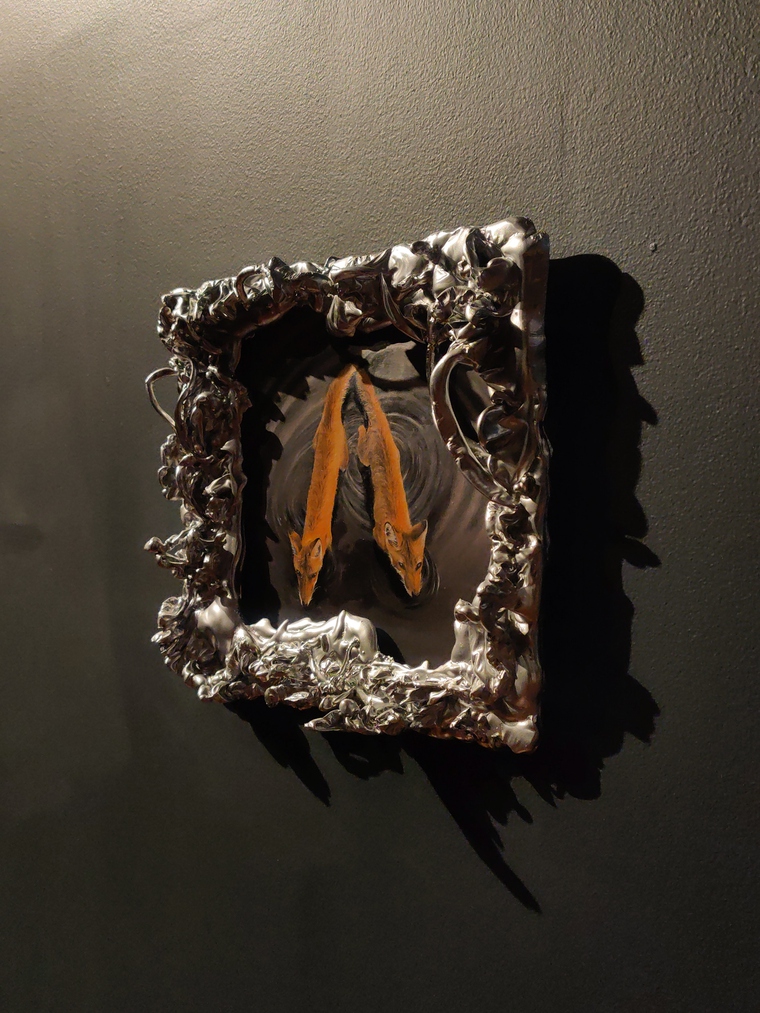Akil Ahamat, Olyvia Hong and Yumoi Zheng
Distance is a blade
04 Apr — 19 May 2024
Distance is a blade
Akil Ahamat, Olyvia Hong and Yumoi Zheng
Curated by Amy Weng
Exhibition runs: 4 April – 19 May 2024
Whakatau and exhibition preview: Thursday 4 April, 6pm
Distance is a blade is a group exhibition featuring works by Akil Ahamat, Olyvia Hong and Yumoi Zheng. Comprising videos, sculpture and wall-based works, the exhibition contends with intimacy and alienation, love and rupture, and the private and affective forms of myth-making that carry us into the future. Drawing on autobiography, pop culture, customary storytelling and forms of online encounter, the works invite us into dream-like sequences where animals and atmospheric effects collide with intensely human dramas. In each of the artists’ works, the sharpness of separation and longing becomes something to hold fast to, an edge upon which to endlessly remake ourselves anew.
Yumoi Zheng’s recent works explore the typhoon as a metaphor for the turbulent relationship between mother and daughter. Wrestling with her mother’s denial of Zheng’s transition to female, Zheng returned to her hometown of Zhanjiang in late 2023, searching for alternative expressions of love within her surrounding environment. A large resin oyster shell sits in the centre of the gallery; a disconcerting eye or pearl-like light projects upwards from its centre, accompanied by the quiet lapping of the ocean. plz, bless me ur most hopeless faggot, 2024, is a playful supplication suggesting the way that experiences of home and transgender identity may come into conflict with established notions of family obligation and filial piety.
Zheng’s Intangible (飘飘渺渺), 2024, is a new video work in two chapters. The title of the work alludes to two interstitial states: to be floating and to be indistinct or barely discernible, and this sense of physical and visual indeterminacy is reiterated throughout. Filmed partially from an aerial vantage, and cut through with handheld footage of oysters and Zheng and her family, the work navigates the artist’s return to China, asking what is left in the aftermath of fierce yet distant love?
In the first half of the video, we see Zheng from a distance on a tiny planet created by the distortion of a 360° camera. The artist flies a small, fluttering kite and at one point appears to slumber on an urban coastline. This is juxtaposed with a quickly moving second half, in which bodies turned away from the camera flicker in and out of vision, concluding with an atomised 3D scan of Zheng’s body, reminiscent of a storm or a hollowed out shell. In each scene, the subject of the camera’s gaze is held at a distance or obscured, as Zheng attempts to rewrite her bodily experience, and in so doing, liberate herself from the entanglement of shame and sensuality, love for one’s family and love for oneself. The beating soundtrack distorts samples of video calls and text-to-speech, the technologies that attempt to overcome separation, becoming an anthem of self-reliance, affirmation and queer joy. “but i created a storm to destroy it and chose to embrace the chaos,” a voice sings, becoming an invocation of desire against erasure. In Zheng’s work, bodies in their various forms–animal, planetary and meteorological bodies–are simultaneously queer and ecstatic, where experiences of pain and longing are at once an assertion of hope and possibility.
Akil Ahamat’s video and 3D printed relief are part of an ongoing series of works that revolve around a romantic relationship between the artist and a snail. The series begins with Be tormented by me, babe, 2019, a small resin plaque depicting an amorous gastropod. The title of the work borrows from the opening lyric of Carly Rae Jepson’s Emotion, and shares in its euphoric projections of fantasy, nostalgia and desire. Like the song, it is unclear in the work who or what is the object of the snail’s affection, and this absence becomes a defining characteristic of the couple’s interactions.
In Dawn of a day too dark to call tomorrow, 2021, we find the pair reunited, albeit at the precipice of conflict. As Ahamat and the snail attempt to converse across an interspecies divide, or as two bodies obscured by darkness and separated by ever decreasing rainfall, the work replicates the narrative and temporal dissonances that arise in any experience of intimacy. Composed as an infinite loop reminiscent of online short-form videos, the dialogue shifts in and out of sync as it is performed and reperformed by Ahamat and the snail. “The stories you tell yourself delivered you into the present.” “And I guess the stories we tell each other deliver us into the future,” Ahamat and the snail endlessly console one another. As the pair speak beside and beyond one another, the work ruminates on the nature of storytelling, ambiguity and thwarted desire, asking how do we move forward in a time of suspended agency?
Dawn of a day too dark to call tomorrow also examines the experience of physical and social alienation that online media produces. In this work, Ahamat continues existing research into ASMR as a self-administered therapeutic tool, a surrogate for touch and other forms of connection. Often associated with the pleasurable tingling sensation triggered by whispering and the sounds of interpersonal touch, ASMR’s restorative effects are translated here into an intimate auditory experience for the gallery. The video sits in a bed of fragrant peat and features moonlit cinematography that operates on the periphery of vision. Experienced from beneath a parabolic speaker (which directs sound onto the viewer positioned beneath it), the work engages multiple senses–sight, sound, smell–grounding us in a sensorial experience of absence. In doing so, the work gently rouses us from our resignation with the present and with precarity, gesturing towards forms of solidarity and social change that are enabled by intimacy and connectivity.
Working with found imagery and materials, Olyvia Hong explores memories and sensory associations with the figure of the kumiho. The kumiho first appeared to Hong as a vision experienced in the wake of personal loss, and is an adversarial spirit in Korean and east Asian folklore who takes the form of a shapeshifting nine-tailed fox. In Hong’s work, the image of the fox is adorned with tender and mysterious relics bringing the past into otherworldly relation with the present.
In the painting Kumiho, 2020, the fox spirit appears in a surreal wooded landscape. She stands on her hind legs, clawing at a tree while looking playfully over her shoulder towards the viewer. The surface of the painting is abraded with cuts and scratches, and attached to the edge of the painting, two wax spirals bracket the image like quotation marks. These wax forms were collected from a large candle that melted away in coils during a vigil for the artist’s mother at their family home. By placing personal and mythological narratives together in the painting, Hong suggests how individual identity might be shaped within collective modes of storytelling. In Kumiho, the malleability of wax, claw and painted surface comprise a kind of haptic or tacit knowledge–we feel the material relationships with our bodies–opening up to alternative forms of agency that might exist within more-than-human networks.
Descendants, 2024, is a daughter work to Kumiho. Painted years later, Descendants relies on a related set of divinatory processes and material transformations. The painting depicts two mirrored foxes swimming in a pool of water, a serendipitous composition created using an AI image generator. The work is framed by a dripping wax window painted in chrome, as if offering a portal into another realm. In both Descendants and Kumiho, the fluidity of wax shares an affinity with the metamorphic form of the fox spirit, allowing the artist to continue her relationship with the departed, as an entity capable of embodying many different beings. In Hong’s reimagining, communal storytelling becomes a means for personal excavation, suggesting its transformational potential.
The title of the exhibition pays tribute to a short poem by American poet Marci Calabretta Cancio-Bello. In the Animal Garden of My Body compares yearning and remorse with the cyclical inhalation and exhalation of animal bodies. “Ask me again how the story should go,” Cancio-Bello exhorts, suggesting the discrepancies in the act of narrative recollection or perhaps the potential to write into a space of loss. In Distance is a blade, the artists attend to this breach by deploying mythic and playful modes of storytelling, exploring how these might allow for a rewriting of the self. In doing so, they speculate on a future where experiences of grief, conflict and isolation can be transfigurative.
—
Akil Ahamat is a Sri Lankan Malay artist and filmmaker currently based on Gadigal land. Ahamat’s work across video, sound, installation and games considers the physical and social isolation of online experience, its affects, and the various intimacies and alienations it produces. Ahamat has most recently produced online works for 4A Centre for Contemporary Asian Art, Parramatta Artists’ Studios, Sydney Review of Books and Bleed: Biennial Live Event in the Everyday Digital, and exhibited physically at The Living Museum of the West, The Lock Up, Palais De Tokyo, Monash University Museum of Art, Institute of Modern Art and Artspace.
Olyvia Hong was born and raised in Tāmaki Makarau. Currently based in Ōtautahi, Hong manipulates found and hand-crafted materials to explore ways in which she can subvert narratives that revolve around loss, grief, self, and familial identities. She was one of the coordinators behind Samoa House Library from 2018-22. Recent group exhibitions include The River Remains; ake tonu atu, 2018, Artspace Aotearoa; I Understand If You’re Busy, 2018, RM; Dog Pit, 2018, Satchi&Satchi&Satchi; and Rabbit on the Moon, 2017, Hapori Vol. 6, all Tāmaki Makaurau.
Yumoi Zheng 郑有妹 is a transfeminine artist working across poetry, performance, installation, fashion and video. Currently based in Zhanjiang, China, Zheng explores the intricacies of her own identities through her creative practice, in which she talks about being apart from her family, growth, loneliness, blessings and the secretive nature of memories. Recent exhibitions include always love xxx, with Isadora Lao, 2024, Toi Pōneke Arts Centre; and talk soon xxx, 2022, Playstation Artist-Run Space, all Pōneke.

